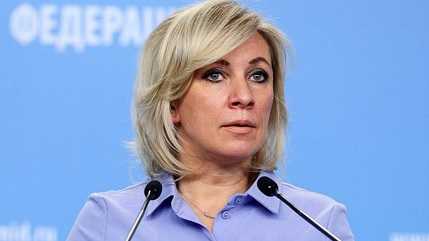
MOSCOW, December 28. /TASS/: Growing traffic jams at crossings on the Russian-Lithuanian border, caused by Vilnius’ obstruction, ultimately stem from the inability of Lithuania and the EU to comply with existing agreements on the transit of goods, Russian Foreign Ministry Spokeswoman Maria Zakharova said in a commentary.
"As a result of Lithuania’s tightening of customs controls, quotas for freight rail transport and restrictions on passenger traffic, severe traffic congestion is emerging on the Russian-Lithuanian border. We consider the current situation as the [result of] Vilnius and Brussels’ inability to comply with the agreements recorded in the joint statements of the Russian Federation and the European Union in 2002 and 2004," the diplomat noted.
As Zakharova indicated, Moscow will continue to consistently strive for the fulfillment by Lithuania and the European Union of their existing international legal and political obligations, as set forth in these documents.
The diplomat recalled that paragraph 9 of the Joint Statement on EU enlargement and Russia-EU relations dated April 27, 2004 "acknowledges the unique situation of the Kaliningrad Region, a part of the Russian Federation."
"In this regard, paragraph 10 of this document confirms the application of the principle of freedom of transit of goods," as well as "an easy and simple customs procedure for the transit of goods to and from Kaliningrad by road and rail," Zakharova noted in her commentary.
A massive traffic jam of tractor-trailer trucks began to form on Russia’s border with Lithuania near Kaliningrad on November 24.
By December 10, 260 vehicles were waiting in line in front of the Chernyshevskoye checkpoint. On December 25, customs reported that the congestion had been cleared, but delays in the reserved border crossing times registered in the electronic queue at that time was up to 48 hours. According to the Kaliningrad Region Customs office, the Lithuanian side did not make any appropriate adjustments to its work routine in order to get truck traffic moving again.
Chernyshevskoye is the only border checkpoint out of four on the border between Lithuania and Russia’s Kaliningrad Region that continues to serve passenger cars and trucks. Two checkpoints are closed, while the third one in the city of Sovetsk allows only pedestrians to cross the border due to the limited capacity of the Queen Louise Bridge, first opened in 1907.




